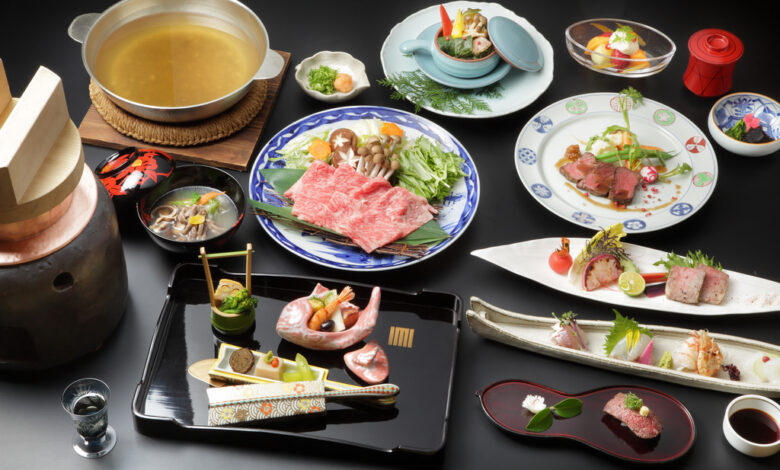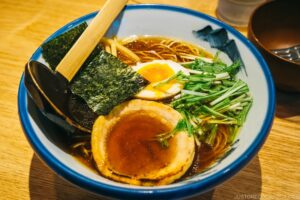10 dishes you should definitely try in Japan

Japanese cuisine is both beautiful and mysterious, attractive and incomprehensible – like the whole Land of the Rising Sun. The most famous oriental dishes in our country are sushi, sashimi and rolls. The Japanese cook delicious noodles and make original dishes from seafood and different types of meat.
Traditional dishes are prepared from fresh ingredients, avoiding food that has been stored for a long time (with the exception of sauces and rice). Each season corresponds to a set of delicacies.
Japanese dishes cannot be called heavy. Food is served in small portions. Most traditional foods are low-calorie. In former times, an aristocratic meal included up to 20 courses, and the classic division into hot, cold, soup, main course, and dessert was not used. The Japanese distinguish the beginning, middle and end of a meal. The order of consumption is at the discretion of the diner.
Larisa Dolina, singer:
– I love to cook and I try to ensure that the food I make is, above all, healthy. Most often these are fish dishes. For example, a salad of fresh red fish. Boil fish fillet, 200 grams, separate it from the bones and chop it. Add a cup of boiled rice. Season with light mayonnaise. You can use olives and herbs for decoration.
Rice dishes
The most famous recipes in our country for classic Japanese cuisine are with rice. On average, a Japanese eats rice 2-3 times a day; often without seasoning, in small portions. In addition to main dishes, rice is used to prepare alcoholic drinks – beer, sake, sethu. Rice sake aged for decades reaches a strength of 18 degrees and tastes similar to sherry. Sethu is like vodka.

Onigiri
The national rice dish is onigiri (rice balls with filling). Thanks to this, onigiri is a popular snack that is taken for lunch at work, school, or on a trip. Anyone can try onigiri – portioned balls are sold in convenience stores on the prepared food shelves. You can eat them on the go – the portions are packed in special bags that open in one motion. Preparing onigiri at home takes a few minutes and is accessible even to inexperienced cooks.
There is no single generally accepted recipe. Rice balls are not made with sweet fillings, but this is where the restrictions are exhausted. Often, portions are supplemented with vegetables, fish, and meat. You can prepare the filling specially or use leftovers from what you made earlier – a half-eaten omelets, yesterday’s salad, meat from soup.
Japan’s national rice dish is made from unleavened rice. You can sculpt onigiri in the shape of triangles, squares, balls and even cartoon characters. In the photo, the menus of famous restaurants often feature exquisite, impeccable classic onigiri.
Sushi
A strip of nori was added for decoration. Literally, the word “sushi” is translated as “rice with vinegar”, but is used to refer to a small (comparable to the size of a finger) piece of fish on rice. The most common subtype is nigiri, prepared with raw fish or shellfish.
Sushi is the country’s most popular dish outside Japan. They are served with wasabi and soy sauce, and pickled ginger is eaten between servings, which renews the sensitivity of the taste buds.
Over the past centuries, sushi has evolved from everyday food into masterpieces of gastronomic excellence. The serving style depends on the ingredients, the characteristics of the restaurant and the principle of the meal. Simple presentation and the ability to follow Japanese minimalism are highly valued.
By the way
A drink for smart people. The process of its production is reminiscent of making rum, where rice is used instead of sugar cane. The vast majority of sake varieties have a strength of 14 to 20 degrees. Sake is one of the rare drinks in the world that is drunk both heated and chilled. It is believed that light and sweet sake is best drunk chilled on a hot summer day.
while strong and spicy sake is drunk in chilly windy weather. By the way, professional tasters distinguish up to 90 shades of the aroma of this drink. And scientists from the University of Tokyo conducted an interesting study, during which they found that people who drink sake every day have an IQ score that is on average 3 points higher than that of abstainers.

Seafood
Japanese chefs can cook thousands of varieties of seafood. The classic version is light frying, stewing, steaming. Many ingredients are used raw. What type of raw fish to serve is determined based on the season. The advantage of tasty food is rapid absorption and saturation with useful microelements. To disinfect fish, it is treated with vinegar.
Occasionally, seafood is consumed not just raw, but alive. They are called odori dishes. This is how squid and perch are served.
Sashimi
Sashimi is sliced raw fish. Shiso and daikon are served as appetizers. Sashimi is often served with a portion of rice.
There are several styles of sashimi. More often they are prepared as hira-zukuri – from rectangular pieces. Ito-kukri is a thin slicing style. Kakku-zukuri is the most complex option, requiring translucent cutting for subsequent composition of picturesque patterns.
A good tone in Japanese cuisine is minimalism in appearance and taste. In order not to lose the originality of the fish, sashimi is served with soy sauce and wasabi.
Yakizakana
This is the name of a traditional fish dish cooked over an open fire. At home, yakizakana is made on the grill. It is especially appreciated for its delicious crunch. National food is served in ryokans. Most often, yakizakana is part of breakfast, but sometimes it is served at other times of the day. For cooking, horse mackerel, saury, salmon, and mackerel are used.




